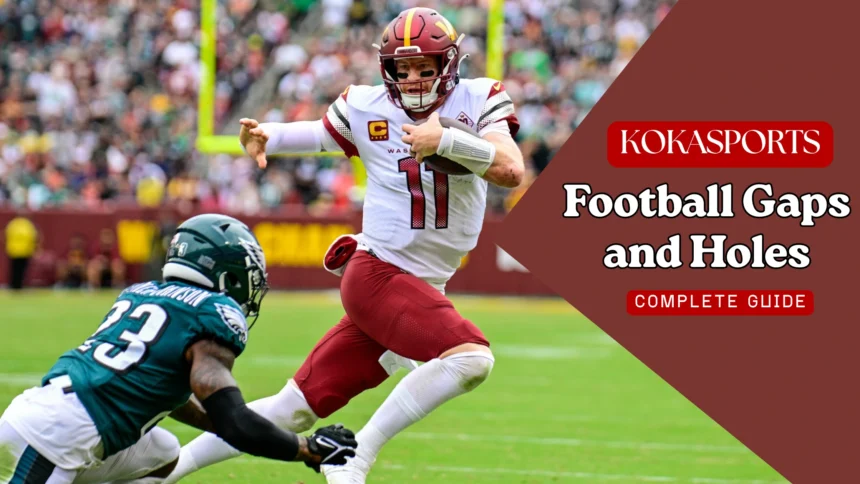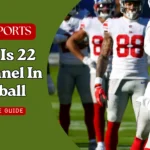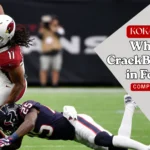Football is often described as a game of inches, but in reality, it’s a game of gaps. Every play, whether it’s a thunderous run up the middle or a game-changing tackle behind the line of scrimmage, comes down to how well teams manage these critical spaces. For coaches, players, and serious fans alike, mastering the concept of Football gaps and holes isn’t optional it’s essential to football IQ and team success.
What Are Football Gaps and Holes?
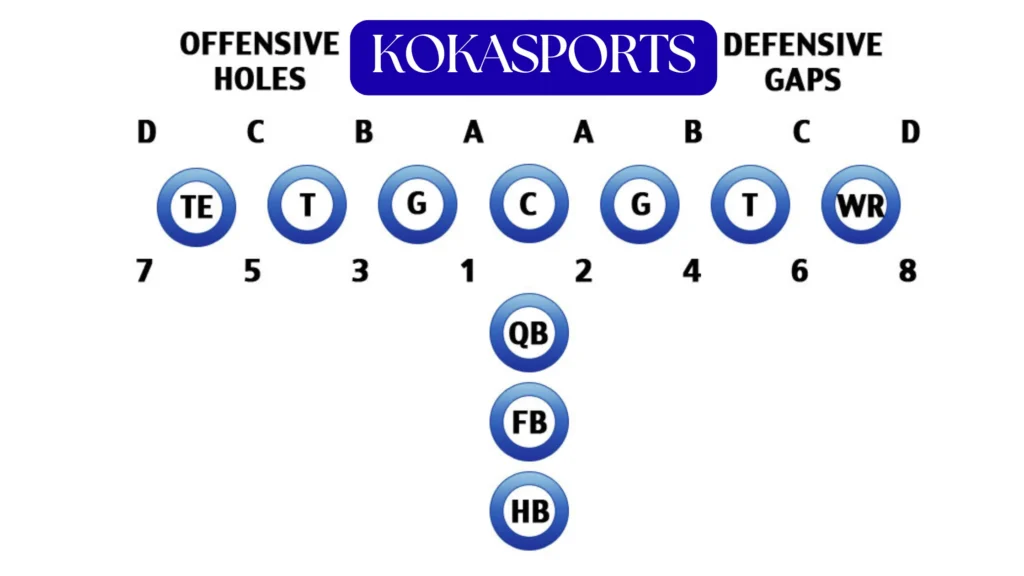
In football terminology, a gap refers to the space between offensive linemen along the line of scrimmage. These spaces exist naturally because players can’t stand shoulder-to-shoulder—they need room to move, engage, and execute their assignments. On defense, controlling these gaps means preventing the offense from advancing the ball. On offense, creating and exploiting these spaces allows running backs to gain yards.
A hole, meanwhile, is the specific opening that the offensive line creates for the ball carrier. Think of it this way: gaps are permanent geographical features of the field, like streets on a map. holes are temporary openings that appear when offensive linemen successfully block their assigned defenders. The running back reads these developing holes and attacks them aggressively.
The key difference? Gaps exist whether or not anyone blocks successfully. Holes only exist when the offense executes properly. A defensive lineman “owns” a gap it’s his responsibility. A running back “hits” a hole it’s his opportunity.
Read Also: What is 13 Personnel in Football? NFL Offensive Personnel Packages & Groupings
The Numbering System: How Teams Label Gaps and Holes
Offensive coordinators and defensive coaches speak different languages when discussing these spaces, but both systems create clarity for their respective units.
On offense, holes are typically numbered from the center outward. The system uses even numbers for the right side and odd numbers for the left side. The center represents zero, with numbers increasing as you move outward:
| Hole Number | Location |
|---|---|
| 1 hole | Between left guard and left tackle |
| 2 hole | Between right guard and right tackle |
| 3 hole | Outside the left offensive tackle |
| 4 hole | Outside the right offensive tackle |
When a quarterback calls “22 power,” everyone knows the rb should expect the ball carrier to hit the 2 hole—between the right offensive guard and tackle.
On the defensive side, gaps use letter designations. This system helps defensive players communicate gap assignments clearly during pre-snap reads:
- A-gap: Space between center and guard and the tackle (inside)
- B-gap: Space between guard and tackle
- C-gap: Space between tackle and tight end (or outside the tackle)
- D-gap: Outside the tight end or te
A defensive coordinator might tell his nose tackle to play “0 technique” (head-up on the center, controlling both A-gaps) or instruct a defensive tackle to line up in “3 technique” (on the guard and tackle gap, attacking the B gap).
Offensive Gaps and Holes: Creating Running Lanes
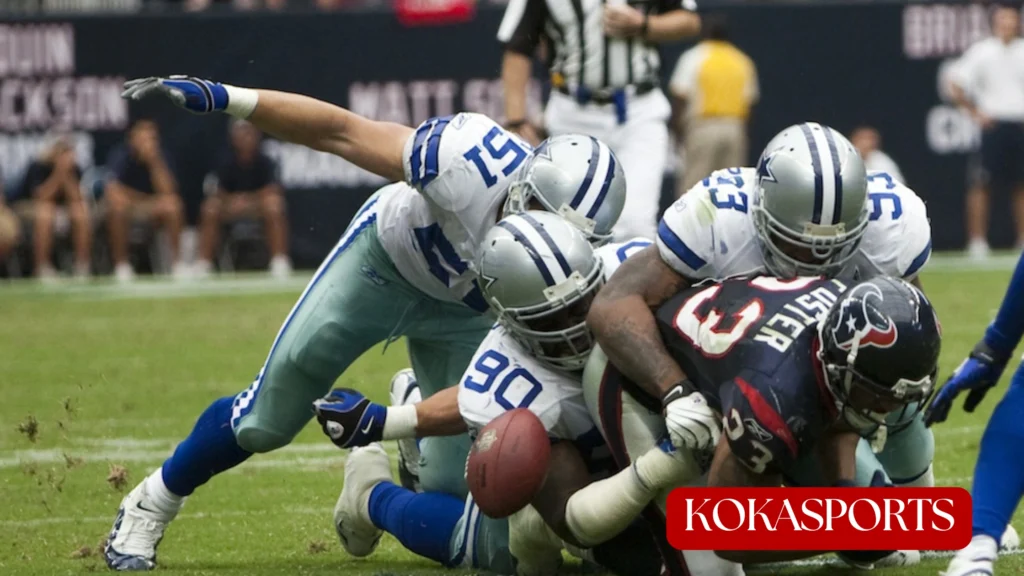
The offense lives and dies by its ability to create holes in the run game. This process starts with the offensive line working in coordinated harmony. Each lineman must win his individual battle while maintaining proper spacing and leverage with his teammates.
Offensive linemen receive specific assignments on every play. On run plays, these assignments typically involve drive blocking (pushing a defender backward), reach blocking (sealing a defender to one side), or pulling (moving to block at a different hole). The offensive lineman must recognize the defensive alignment, identify his target, and execute with proper technique.
Consider a basic inside zone run. The offensive line moves laterally together, creating horizontal displacement along the line of scrimmage. The guard and tackle work in tandem to seal the defensive tackle, while the center handles the nose tackle or linebacker. The running back reads these blocks, identifies which gap offers the best opportunity, and attacks decisively.
Running backs must possess exceptional vision and patience. The rb takes his steps toward the designated hole, but he can’t blindly commit. He reads the offensive line’s blocks, the movement of second-level defenders, and the developing traffic patterns. Sometimes the called hole closes, but another opens. Elite backs make these reads at full speed and exploit any opening.
Offensive formations significantly impact hole creation. When a tight end lines up next to the offensive tackle, it creates an additional gap for the defense to account for. The te can block down on a defensive lineman, seal off a linebacker, or release into a route, freezing defensive players and creating natural running lanes.
Defensive Gaps: Assignment Football and Gap Integrity
While offense creates holes, defense prevents them through disciplined gap control. This concept, known as gap integrity, represents the foundation of sound defensive football. Every gap must have a defender responsible for it—no exceptions.
Defensive line coaches teach two primary techniques: one gap responsibility and two gaps (or two-gapping). In a one gap system, each defensive lineman attacks a specific gap aggressively, penetrating the backfield to disrupt plays. The defensive tackle in a 4 technique position, for example, attacks the B-gap between guard and tackle with explosive first movement.
Two-gapping requires different skills. Here, a defensive lineman—often a nose tackle or powerful defensive end—controls two adjacent gaps simultaneously. He reads the offensive line’s movement, absorbs the initial block, then sheds to whichever gap the play attacks. This technique demands tremendous strength and discipline.
Linebackers play a critical role in gap defense. They fill gaps that open when defensive linemen get blocked or when the offense pulls lineman to create natural running lanes. The linebacker must recognize these developing holes, shoot through them aggressively, and meet the running back in the hole rather than letting him reach the second level.
Different defensive fronts distribute gap responsibilities differently. In a 4-3 defense, four down defensive linemen typically handle the A-, B-, and C-gaps, with linebackers filling behind them. In a 3-4 defense, three down linemen control gaps with linebackers providing more flexibility to attack or fill as the play develops.
Alignment techniques tell the story. When coaches describe a defensive tackle‘s position using numbers and letters, they’re communicating gap responsibility:
- 0 technique: Head-up on center (outside shoulder of the center)
- 2i: Inside eye of the guard (inside shoulder)
- 3 technique: Outside shoulder of the guard
- 4i: Inside eye of the tackle
- 4 technique: Outside shoulder of the tackle
Gap Schemes vs Zone Blocking: Offensive Philosophy
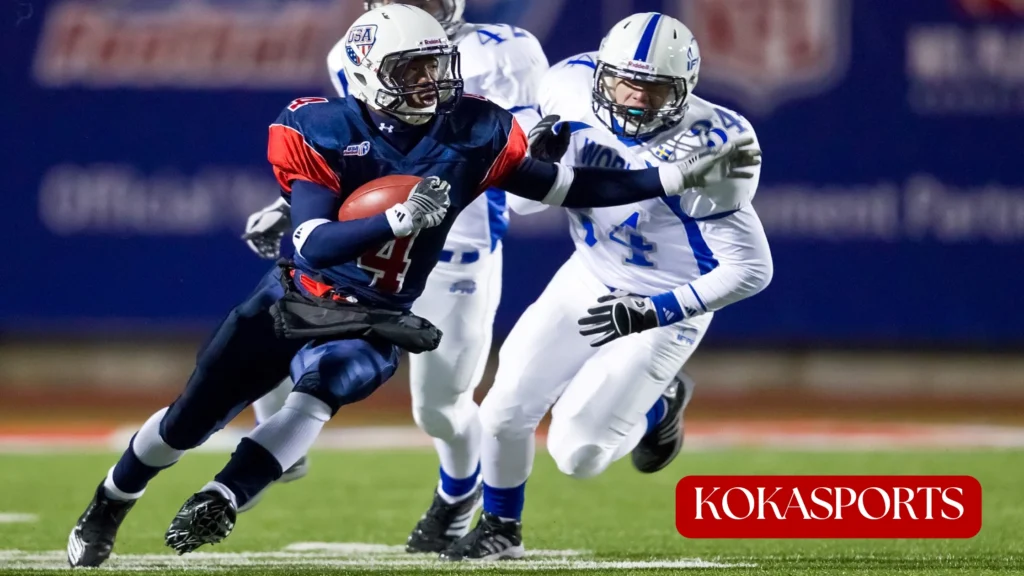
Offensive coordinators choose between multiple blocking schemes, each with different gap philosophies. Gap schemes involve pulling lineman to create numerical advantages at specific holes. The offensive lineman might pull from the backside guard position to lead through a gap on the opposite side of the line, becoming a blocker for the ball carrier.
Power and counter runs exemplify gap scheme principles. These plays create overwhelming force at the point of attack, giving the running back a clear hole to attack. The rb knows exactly where the hole should develop and attacks it with conviction.
Zone blocking schemes operate differently. The entire offensive line moves in unison, creating horizontal displacement and natural holes. The running back reads the defensive alignment and attacks whichever gap offers the best opportunity. This system requires tremendous coordination and communication among offensive players.
How Gaps Shape Defensive Strategy
Defensive coordinators obsess over gap control because it determines their unit’s success against the run. They must account for every gap on every play, or the offense will exploit the opening for significant gains.
When facing power running teams, defensive coordinators often “stack the box,” adding extra defenders near the line of scrimmage to ensure gap integrity. This might mean bringing a safety down into the box or using a blitz package where linebackers attack gaps aggressively at the snap.
Film study reveals gap vulnerabilities. Coaches watch how offensive linemen move in various formations, where they create consistent holes, and which gaps the defense struggles to control. They identify tendencies: “On second-and-short from a split formation, they run power to the tight end side of the ball 70% of the time.”
The qb factors into gap control too. On run plays, the quarterback often becomes a gap player himself, either through designed runs or option plays where he reads a specific defender and makes a keep-or-pitch decision based on that defensive player‘s actions.
Training Gaps and Holes: Essential Drills
Mastering gaps and holes requires countless repetition. Offensive linemen run block progression drills where they practice reaching defenders, securing gaps, and creating horizontal displacement. They work combinations where two lineman (like the center and guard) coordinate to seal a defensive tackle before one climbs to the second level.
Running backs practice “hole recognition” exercises where coaches call out holes at the last second, forcing the rb to read, react, and attack the correct gap instinctively. They work on patience and vision, learning to press the hole without over-committing too early.
Defensive linemen drill gap control relentlessly. They practice two-gapping techniques, working to control multiple spaces while reading offensive line keys. They practice slant moves where they attack a different gap than their alignment suggests, creating confusion for the offensive line.
Linebackers study gap fills, learning to diagnose run plays quickly and shoot through the correct gap aggressively. They practice scraping over blocks, maintaining gap integrity even when offensive linemen try to wall them off.
Common Mistakes in Gap Control
Even experienced players make critical gap errors. Offensive linemen sometimes fail to sustain blocks, allowing defenders to penetrate gaps and close holes before the running back arrives. This happens when a lineman loses leverage or gets overpowered by a stronger defensive lineman.
Running backs occasionally miss the designed hole, either by committing too quickly to the wrong gap or bouncing outside when a hole exists inside. Patient backs who trust their offensive line typically gain more yards than those who panic and improvise.
On defense, the most common mistake is defensive linemen abandoning their gap responsibilities. When a defensive end or tackle over-pursues the ball carrier, it creates an open gap for cutback lanes. Disciplined defensive players maintain gap alignment until the play is clearly moving away from their responsibility.
Blitz timing also affects gap control. When linebackers or safety players attack gaps too early or too late, they either tip off the offense or arrive after the running back has already passed through the hole. Coordinated blitz packages require precise timing and clear gap assignment communication.
Film Study and Gap Recognition
Professional teams spend hours studying gaps on film. Offensive coordinators identify which gaps opponents struggle to defend. They notice patterns: “Their nose tackle gets worn down in the fourth quarter, opening up the A-gap for inside runs.”
Defensive coordinators study offensive tendencies, learning which formations telegraph specific run plays. They recognize when an offensive formation creates natural gap advantages, then adjust their alignment to compensate. They might shift a defensive tackle from 3 technique to 4i based on the tight end‘s alignment and the anticipated gap attack.
Players develop gap recognition through film study too. Running backs learn to read specific keys—the movement of the first defender past the line of scrimmage, the angle of the pulling guard, the block of the tight end. These keys help them identify which hole will develop before it actually opens.
The passing game connects to gap control as well. Offensive coordinators use play-action passes to manipulate gap-conscious defenders, freezing them briefly while a receiver gets open downfield. When defensive players respect the run game and honor their gaps, it creates natural passing opportunities.
Conclusion: The Foundation of Football Success
Mastering gaps and holes separates good football teams from great ones. On offense, creating clean holes allows running backs to gain yards, while defense wins by maintaining gap integrity to stop explosive plays.
Every lineman must know their gap responsibilities and execute with precision. Linebackers fill gaps aggressively, running backs attack holes decisively, and quarterbacks make smarter reads by recognizing defensive alignments.
This knowledge elevates everyone’s game. Coaches exploit gap vulnerabilities in play design, and even wide receivers improve their blocking on run plays by recognizing gap schemes. Whether you’re a player, coach, or devoted fan, studying gaps and holes unlocks the fundamental language of football strategy and deepens your appreciation for this complex, beautiful game.
FAQs
What are gaps in football?
Gaps are the spaces between offensive linemen along the line of scrimmage that defensive players must control to stop runs.
What is the difference between a hole and a gap?
A gap is a permanent space between linemen, while a hole is a temporary opening created when offensive linemen successfully block defenders.
What is a hole in football?
A hole is the specific running lane that offensive linemen create for the running back by blocking defenders away from a gap.
What is a gap in soccer?
A gap in soccer refers to open space between defensive players that attackers can exploit to pass through or dribble into dangerous areas.

